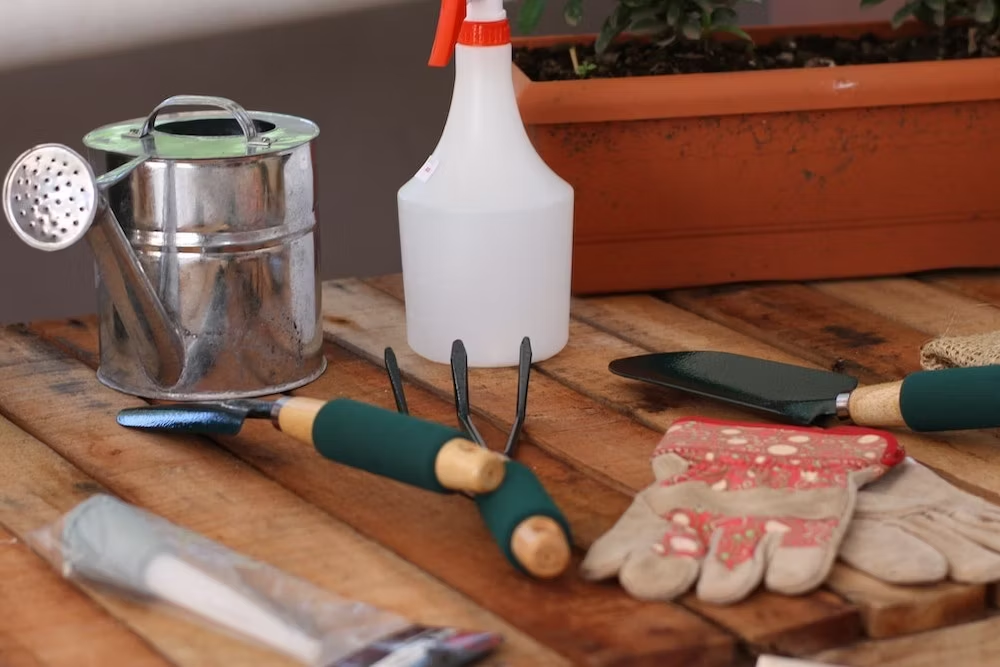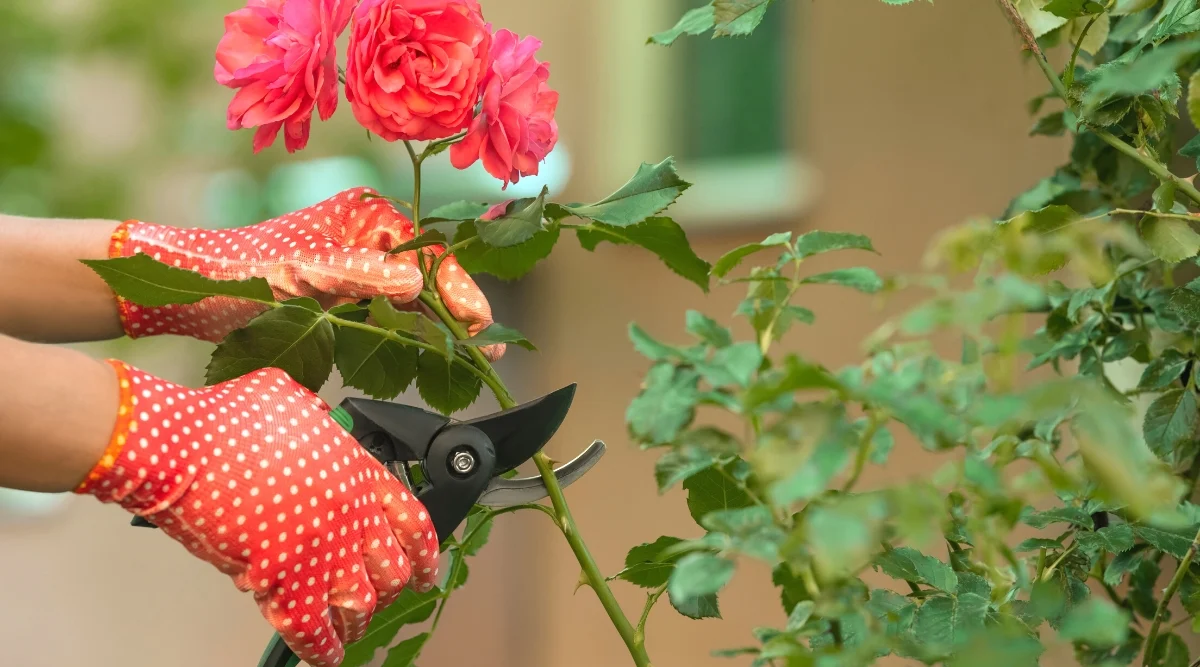How To Propagate Roses - Easy Steps For Beautiful Blooms
Growing roses doesn’t have to stop with one plant. Learn how to propagate roses and multiply your garden's beauty effortlessly.
Nov 06, 202415.3K Shares439.9K Views

Roses are undeniably one of the most cherished flowers in any garden, captivating gardeners with their beauty and fragrance. But did you know that you can easily multiply your favorite rose bushes and fill your garden with even more vibrant blooms? By learning how to propagate roses, you can grow new plants from cuttings, seeds, or even by dividing existing bushes, giving your garden a boost without the cost of buying new plants.
This process not only enhances the beauty of your garden but also allows you to preserve your favorite rose varieties. Imagine cultivating roses that you’ve nurtured from the very beginning, giving you a deeper connection to your garden. Here, you’ll find tried-and-true methods to propagate roses that will help you grow a flourishing rose garden for years to come.
Why Propagate Roses?
Propagating roses offers more than just cost savings; it gives you the opportunity to nurture and grow more of the roses you love. It’s an eco-friendly alternative to purchasing new plants, allowing you to create beautiful new roses from an existing bush in your garden.
Learning how to take care of rosesproperly will also help ensure that the roses you propagate grow strong and healthy, giving you a thriving, sustainable garden full of beautiful blooms. Here’s why propagation is a win-win for rose gardeners:
- Cost-effective:Instead of buying new roses, propagate from the ones you already have.
- Preserve favorite varieties:By cloning from cuttings, you ensure that you can keep the exact traits of the roses you love most.
- Eco-friendly:Propagating your roses reduces the need for mass production and transportation of new plants.
- Gifting opportunity:There’s something special about giving a rooted cutting of your favorite rose as a gift to a fellow gardener or loved one.
Roses can be propagated in a variety of ways, each with its own advantages. Let’s explore the tools and techniques that will help you successfully grow more roses.
Tools And Materials Needed For Rose Propagation
Before going into the different propagation methods, it’s essential to gather the right tools and materials. These items will ensure the best possible results and make the process more efficient.
- Sharp pruning shears: Clean, precise cuts are crucial for healthy propagation.
- Rooting hormone: This powder or gel boosts the chances of successful rooting.
- Small pots or containers: You'll need a home for your cuttings or seeds to establish themselves.
- Moist, well-draining potting mix: A good-quality soil mix prevents waterlogging and promotes healthy root growth.
- Plastic bags or clear domes: These helps maintain humidity, which is vital for the early stages of propagation.
- Watering can with a gentle spout: Keep the soil moist without over-saturating.
- Rubbing alcohol or bleach: Sanitize your tools between cuts to prevent the spread of diseases.
Having these tools at your fingertips will make the process much smoother and improve your chances of successful propagation.
The Best Time To Propagate Roses
Timing is everything when it comes to propagating roses. Knowing the right season to take cuttings or start seeds can greatly increase your chances of success.
- Cuttings: The best time to take rose cuttings is in late spring or early summer. During this period, rose stems are soft and pliable, which makes them more likely to root. This is when the plant is actively growing, and the temperatures are mild, providing the perfect conditions for rooting.
- Seeds: If you're propagating roses from seeds, collect the seeds in late summer or fall when the rose hips (the fruit of the rose) are fully ripened. Seeds should be stratified (kept in cold conditions) over winter before being planted in early spring.
- Layering or Division: For methods like layering or division, late summer or early fall is optimal. This gives the new plant enough time to establish before winter, while not putting too much stress on the mother plant.
Pay attention to your local climate, as the best propagation time may vary based on regional weather patterns.
Methods To Propagate Roses
There are multiple methods to propagate roses, and each offers its own set of advantages depending on your needs and preferences. Below, we’ll break down four common methods: cuttings, seeds, layering, and division.
Propagating Roses From Cuttings
Taking rose cuttings is one of the easiest and most reliable methods of propagation. This process involves taking a piece of the stem from a healthy rose bush and encouraging it to grow roots.
- Choose a healthy stem: Select a stem that is about 6-8 inches long, preferably from new growth (softwood) rather than older, woody stems. Ensure it has at least 3-4 leaf nodes.
- Cut below a leaf node: Using sanitized pruning shears, make a clean cut just below a leaf node (the point where leaves grow out of the stem).
- Remove leaves: Gently remove the lower leaves from the cutting, leaving only the top two or three sets of leaves. This helps the plant focus its energy on growing roots rather than sustaining leaves.
- Dip in rooting hormone: Dipping the cut end into rooting hormone will increase the chances of successful rooting.
- Plant the cutting: Insert the cutting into a small pot filled with moist potting soil, making sure at least one or two nodes are buried in the soil.
- Maintain humidity: Cover the cutting with a plastic bag or cloche to retain moisture, creating a mini greenhouse effect.
- Place in indirect sunlight: Keep the pot in a warm spot with indirect sunlight, watering the soil lightly as needed.
Tip: After 4-8 weeks, you can test if roots have formed by gently tugging on the cutting. If it resists, roots are developing!
Propagating Roses From Seeds
Growing roses from seeds is more time-consuming than cuttings but offers a fascinating glimpse into the rose's lifecycle. This method is ideal for creating new varieties or growing wild roses.
- Harvest seeds from rose hips: In late summer or fall, collect ripe rose hips from a healthy bush. These hips should be full and colored (orange or red, depending on the rose variety).
- Extract and clean seeds: Open the rose hips and remove the seeds. Rinse them thoroughly to remove any remaining fruit.
- Stratify the seeds: Place the seeds in a moist paper towel inside a plastic bag, and store them in the refrigerator for 10-12 weeks. This cold treatment mimics winter conditions and improves germination rates.
- Plant the seeds: After stratification, plant the seeds in small pots filled with well-draining potting mix. Lightly cover with soil.
- Provide warmth and light: Place the pots in a warm, sunny spot and keep the soil moist but not soggy. It may take several weeks to months for seedlings to appear, so patience is key!
Tip: Rose seeds are unpredictable, and not all may germinate. Be prepared for variation in the results.
Propagating Roses By Layering
Layering is an easy, hands-off method of propagation, suitable for larger rose bushes with long, flexible stems. This method allows you to root a new plant while it’s still attached to the parent bush.
- Choose a healthy stem: Select a long, flexible stem that can reach the ground without breaking.
- Create a shallow trench: Dig a small trench in the soil near the parent plant.
- Wound the stem: Slightly wound the section of the stem that will be buried. This encourages root formation.
- Bury the stem: Bury the wounded part of the stem in the trench, leaving the tip exposed above the soil. Use a small rock or garden staple to keep the stem in place.
- Water regularly: Water the buried section regularly, ensuring the soil stays moist.
- Wait for roots to form: After a few months, roots should develop at the buried section. Once established, cut the new plant from the parent and transplant it to its own spot.
Propagating Roses By Division
Division is a reliable method for propagating shrub or bushy rose varietiesthat grow with multiple shoots from the base.
- Dig up the parent rose: Carefully dig up the entire rose bush, being mindful not to damage the roots.
- Divide the bush: Use a sharp spade or garden knife to divide the root ball into sections. Each section should have its own shoots and roots.
- Replant the divisions: Immediately plant the divided sections in their new locations, spacing them appropriately to allow for future growth.
- Water and mulch: Water the newly planted sections and apply mulch around the base to retain moisture and suppress weeds.
Tip: Division works well for mature roses that have become overcrowded or need rejuvenation.
How To Care For Newly Propagated Roses
Once you’ve successfully propagated your roses, proper aftercare is essential to ensure they thrive. Depending on the types of rosesyou are growing, your care routine may vary slightly. Different rose varieties have unique requirements for water, sunlight, and pruning. Understanding the specific needs of your roses will help you maintain their health and ensure they flourish. Here’s how to care for your newly propagated plants:
- Watering: Keep the soil consistently moist but not waterlogged. Overwatering can lead to root rot, while under-watering may stress the young plant.
- Sunlight: Newly propagated roses should start in indirect sunlight. As they grow stronger, gradually introduce them to more direct light.
- Fertilizing: After a few months, lightly fertilize with a balanced fertilizer to encourage growth. Avoid over-fertilizing young plants.
- Pest control: Keep an eye out for common rose pests like aphids and spider mites. Treat early with organic pest control methods, such as neem oil or insecticidal soap.
With proper care, your new rose plants will develop into healthy, mature bushes.
Common Challenges And Solutions
Even with the right techniques, you may face some challenges while propagating roses. One common issue is improper soil conditions, as roses require well-draining, nutrient-rich soil to thrive. Ensuring you use the best soil for roseswill help improve the success rate of propagation and the overall health of your plants.
Using a soil mixture rich in organic matter with good drainage can prevent root rot and promote strong root development. Here are a few other common problems and how to solve them:
- Cuttings won’t root: This can happen if the cutting is too old or too dry. Always take cuttings from new growth and use rooting hormone to stimulate root development.
- Root rot: Overwatering or poor drainage can cause the roots to rot. Use well-draining soil and avoid waterlogging the cutting.
- Pests: Young rose plants are vulnerable to pests. Use organic pest control methods and keep a close watch for infestations.
FAQs
How Long Does It Take For A Rose Cutting To Root?
It typically takes 4-8 weeks for rose cuttings to root, depending on the variety and conditions. You can check root development by gently pulling on the cutting; if there’s resistance, roots have formed.
What Is The Easiest Method To Propagate Roses?
The easiest method is propagating from cuttings, as it requires minimal tools and is generally successful when done in the right conditions.
Can I Propagate Any Rose Variety?
Most rose varieties can be propagated, but some hybrids may not root as easily from cuttings. It’s best to experiment with different methods to find what works for your variety.
Is Rooting Hormone Necessary?
While rooting hormone is not mandatory, it significantly increases the chances of success, particularly with difficult-to-root varieties.
When Should I Transplant My Propagated Roses?
Wait until your propagated roses have a well-established root system before transplanting. This usually takes several months, depending on the propagation method.
Final Thoughts
Propagating roses is an exciting and cost-effective way to expand your garden, using methods like cuttings, seeds, layering, or division. By following these techniques and providing proper care, you'll be rewarded with healthy new rose plants that enhance the beauty of your garden.
With patience and persistence, you can grow a stunning rose collection right from your own garden. Now’s the perfect time to start propagating your roses and watch your garden flourish!
Latest Articles
Popular Articles

